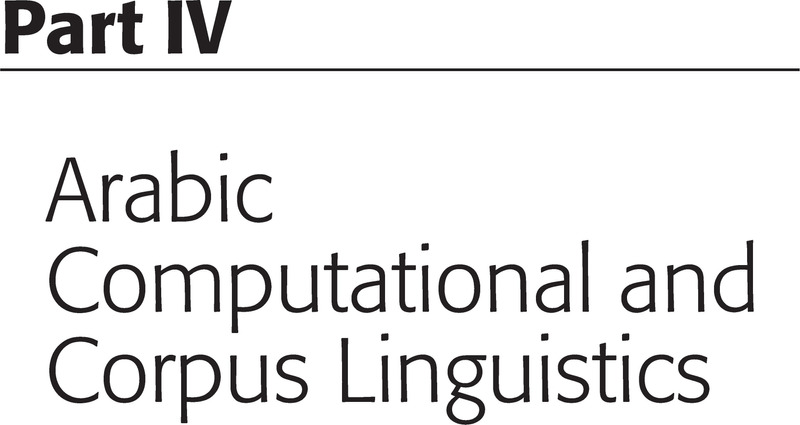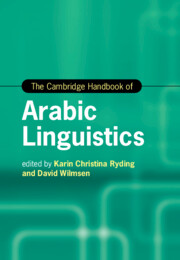Book contents
- The Cambridge Handbook of Arabic Linguistics
- Cambridge Handbooks in Language and Linguistics
- The Cambridge Handbook of Arabic Linguistics
- Copyright page
- Contents
- Figures
- Tables
- Notes on Contributors
- Acknowledgements
- Abbreviations
- Introduction
- Part I Arabic Applied Linguistics
- Part II Arabic Variation and Sociolinguistics
- Part III Theoretical and Descriptive Studies
- Part IV Arabic Computational and Corpus Linguistics
- Part V Arabic Linguistics and New Media Studies
- Part VI Arabic Linguistics in Literature and Translation
- Index
- References
Part IV - Arabic Computational and Corpus Linguistics
Published online by Cambridge University Press: 23 September 2021
- The Cambridge Handbook of Arabic Linguistics
- Cambridge Handbooks in Language and Linguistics
- The Cambridge Handbook of Arabic Linguistics
- Copyright page
- Contents
- Figures
- Tables
- Notes on Contributors
- Acknowledgements
- Abbreviations
- Introduction
- Part I Arabic Applied Linguistics
- Part II Arabic Variation and Sociolinguistics
- Part III Theoretical and Descriptive Studies
- Part IV Arabic Computational and Corpus Linguistics
- Part V Arabic Linguistics and New Media Studies
- Part VI Arabic Linguistics in Literature and Translation
- Index
- References
Summary

- Type
- Chapter
- Information
- The Cambridge Handbook of Arabic Linguistics , pp. 425 - 504Publisher: Cambridge University PressPrint publication year: 2021
References
References
References
Corpora and Web Resources
References
Arabic Corpora
Arabic Learner Corpus: http://www.arabiclearnercorpus.com
arabiCorpus: http://arabicorpus.byu.edu
CALM: http://linguistics.byu.edu/thesisdata/CALMcorpusDownload.html
Gumar: https://camel.abudhabi.nyu.edu/gumar/
Korpus Malti http://mlrs.research.um.edu.mt/index.php?page=corpora
shami-corpus: https://github.com/GU-CLASP/shami-corpus
Tunico: https://tunico.acdh.oeaw.ac.at/about_corpus.html
Tunisya: http://www.tunisiya.org



